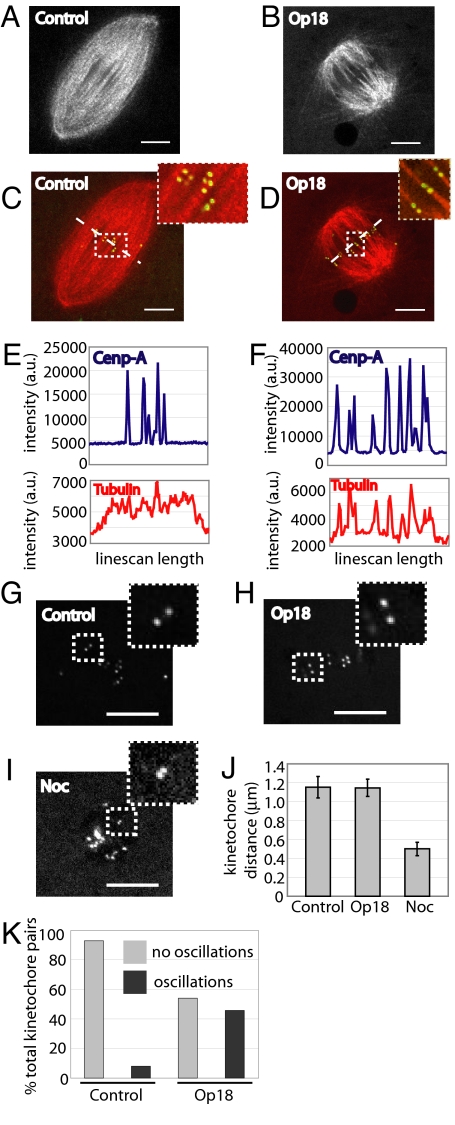Fig. 3.
Kinetochore microtubules persist and interkinetochore tension is maintained in spindles treated with excess Op18. (A) Control spindle labeled with 75 nM X-rhodamine tubulin, imaged in a single focal plane by confocal microscopy. (B) A 15 μM Op18-treated spindle, labeled and imaged as in panel A. (C) Merge of tubulin image (red) from control spindle (A) with Alexa488-conjugated CENP-A kinetochore marker antibody (green). Dashed box indicates region magnified in the upper right. Dashed line represents position of line for line scan in panel E. (D) Merge of tubulin image (red) from Op18-treated spindle in panel D with Alexa488-conjugated CENP-A kinetochore marker antibody (green). Dashed box indicates region magnified in the upper right. Dashed line represents position of line for line scan in panel F. (E) Line scan intensities across spindle equator for the CENP-A image and corresponding tubulin image for control spindle in panel C. x axis represents length of line drawn across the spindle midzone; y axis represents arbitrary intensity units. (F) Line scan intensities across Op18-treated spindle equator from panel D were performed as in panel E. (G–I) Confocal single plane image of spindle kinetochores, labeled with Alexa488-conjugated CENP-A antibody, and treated with DMSO (G), 15 μM Op18 (H), or 10 μM nocodazole (I). White dashed box indicates magnified region. (J) Bar graph of the average distance between kinetochore pairs in control and Op18-treated spindles, and nocodazole-treated extract. Error bars represent one standard deviation. (K) Kinetochore oscillations were scored in control and Op18-treated spindles. Only kinetochore pairs present for 10 frames or greater (40 sec) were scored, with oscillations being defined as a 2 pixel (0.32 μm) or greater change in distance over total image time. n = 32 control spindles (115 kinetochore pairs; 93% no oscillations, 7% oscillations) and 30 Op18-treated spindles (96 kinetochore pairs; 54.2% no oscillations, 45.8% oscillations). (Scale bar: 10 μm.)

